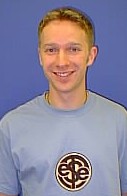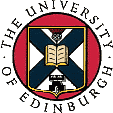TAYLOR'S
RESEARCH
PAGE

Home Page
Research
Publications
Artificial Life
Consciousness Studies
Extraterrestrial Life
Personal Page
A Brief CV
News
Last updated:
26 Apr 1999
Tim Taylor
 Room E6,
Room E6,
Institute of Perception, Action and Behaviour,
Division of Informatics,
University of Edinburgh,
5 Forrest Hill, Edinburgh, EH1 2QL, U.K.
[old contact details removed: TJT, 28 Jan 01]
Research Interests
Overview
My PhD thesis was entitled "From Artificial Evolution to Artificial Life". I am interested in building an artificial environment that is capable of supporting an evolutionary process which is qualitatively similar to the evolution of biological organisms seen in the real world. Some important questions are:-- What sorts of differences exist between biological evolution and artificial evolution (as exhibited by existing Artificial Life systems such as Tierra)?
- What were the really major evolutionary events during the history of life on Earth, and do any common principles lie behind them?
- What sorts of components and interactions would be required in an artificial system to enable it to support these types of events?
Nidus
[nidus noun, (1) a nest or breeding place ... (2) a place where something originates, develops ...WWWebster Dictionary]
Description
Nidus is very different to most existing Artificial Life models of evolution (COSMOS, Tierra etc.). It is a constructive dynamical system, fundamentally similar to that proposed in recent work by Walter Fontana and Leo Buss. It departs from Fontana and Buss' work in that their goal is to build a generalised logical description of chemistry, whereas I wish to implement a system capable of supporting very large populations (of the order of millions of components) capable of evolving living organisations. Nidus therefore has a much more compact (but therefore less general) representation of components, the fundamental interactions are somewhat simpler and require less computation, and it also has an explicit spatial representation. It is similar in may respects to a model of autopoiesis proposed by Francisco Varela et al. and recently resurrected by Barry McMullin, but I have tried to base the Nidus design upon more general and explicit assumptions, and also make it more easily extendable. It is also somewhat related to work by John Holland (the alpha-universes and ECHO), but, again, I have tried to make it more general but at the same time simpler and more computationally efficient. Being a constructive system, the design of individual organisms is not pre-defined, and ecological interactions are modelled more naturally than in Tierra-like systems. Having no pre-defined structure for organisms also leads naturally to the possibility of hierarchical evolution (if the system is composed of the right components and interactions). One way of looking at what I am attempting to do with Nidus is to say that I am trying to embed a Tierra-like population of evolving programs on top of an artificial chemistry.Current State
June 1998: The Nidus design is finally complete Implementation will commence in June, followed by a first set of experiments during the summer of 1998. This will be all I have time for before having to write up my PhD. If you'd like to see this system developed further, how about offering me a research post or a job?Publications
- Taylor, "Nidus Design Document", 1998.
COSMOS
[Competitive, Self-Replicating Multicellular Organisms in Software]Description
COSMOS is an implementation of a Tierra-like system, in which hundreds of computer programs (written in a specially designed language) attempt to copy themselves into new parts of the system's memory, in competition with all the other programs for memory and CPU time. Mutations of various sorts are sometimes introduced into the programs, so that new types of programs appear, the "better" ones survive, and a process of evolution is observed. COSMOS has a few novel features, including:-- It was originally designed to look at the evolution of parallel programs from serial ones. It uses a distributed memory model of parallelism that allows programs to dynamically create parallel processes in a manner that is almost identical to that in which they would normally reproduce to create a new organism. The similarity between the two processes means that the transition from serial to parallel programs is, genetically, not a very big step. Whether this transition is actually made depends, of course, on the selective pressures in the system.
- The flow of control of a program in determined by a set of "regulators", which the program itself can create and destroy. In a parallel program, regulators can be passed between processes so that a complex regulatory network can be formed. This could support the evolution of differentiated processes within the organism (MIMD parallelism).
- The allocation of CPU time to individual programs is determined by a program's own actions. Each program is responsible for collecting "potential energy" from the environment, which it can then exchange in order to run some more of its instructions. The less potential energy a program has stored, the more likely it is to die when the amount of free memory in the system starts to get low. Individual programs therefore have some control over their own longevity.
- Programs can compose and send arbitrary messages to each other via the environment.
Current State
April 1998: I have finished development work on COSMOS. At present I am performing a series of experiments to test the sensitivity of the system to various parameters, and also to model a number of scenarios that have been proposed to explain the emergence of multicelluler life on Earth. I also plan to develop a simple Java graphical interface for COSMOS in the first half of 1998.Publications
- Taylor & Hallam, "Replaying the Tape: An Investigation into the Role of Contingency in Evolution", 1998.
- Taylor & Hallam, "Studying Evolution with Self-Replicating Computer Programs", 1997.
- Taylor, "The COSMOS Artificial Life System", 1997.
- a short poster prepared for the First Scottish Workshop on Evolutionary Computation in Autumn 1996 (a bit out of date...)